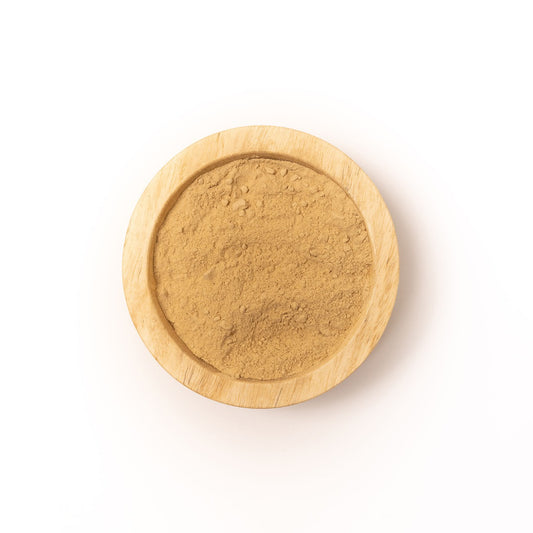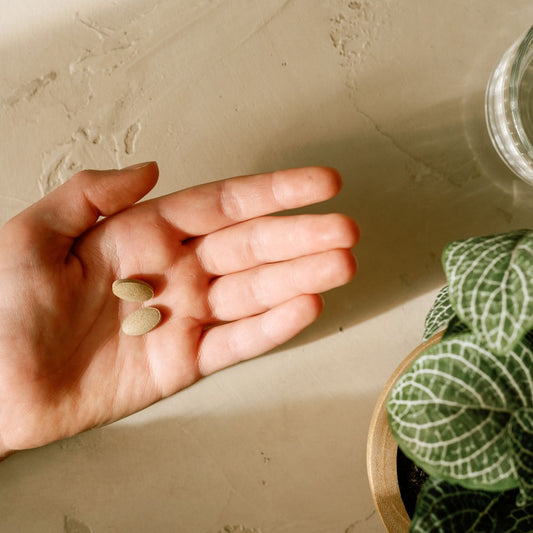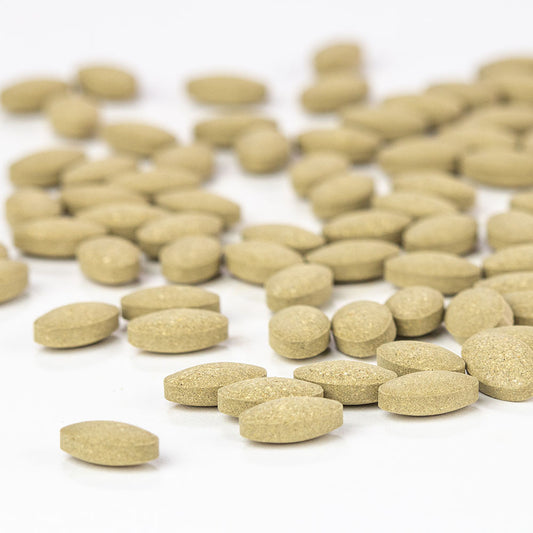Welcome to our Birthing Ayurveda Postpartum series, where we follow the developing story of one woman's first steps into motherhood and life in her new role.
Since babies cannot communicate verbally, we look to their body language and body functions to tell us what our babies need and if they are doing okay. Like adults, babies' bowel movements and digestion are very telling of their health and can be the cause of much distress.
First let's visit what is normal. In the first few weeks, the baby's poop goes through many phases and changes. It starts with a dark, tarry appearance, called meconium. It is dark olive green in color, does not have much of an odor, and is made of intestinal cells, bile, water, mucus, amongst other things. This lasts for a couple days. Several days later, the stool turns into a lighter yellow-green color and is less sticky. This transitions into a more yellow, creamy stool. It appears to almost have flecks of yellow in it and is not uncommon to be runny. If your baby is taking formula, it will have a thicker consistency like peanut butter.
If your baby's poop veers away from this trend for a couple of bowel movements, fear not. The system will usually equilibrate. For instance, she may have a couple more green stools, especially if you have an oversupply of milk and the baby is getting more of the carbohydrate-rich foremilk (comes first before the more fatty hind milk). What is not normal is red or bloody stool, white or grey stool, very watery stool, hard stool, or stool that is dark like meconium more than five days after birth.
If you are breastfeeding, do not be surprised if your baby has a bowel movement with every feed. This will slowly decrease over the next several months. The key to knowing whether your baby is getting enough milk is to make sure that she has at least five or six wet diapers a day (in the first few days when she is only getting the thick and nutritious colostrum, she may only have a few wet diapers a day) and having bowel movements (at least three a day in the first month and then often decreases in the months thereafter). If she has fewer bowel movements, then the amount of stool per bowel movement should increase. Your baby should also be gaining weight. They tend to lose weight and then regain weight to their birth weight by two weeks of age, and then put on five to ten ounces a week in the first month, five to eight ounces a week from months two to three, and two to five ounces a week from months three to six. If you are breastfeeding, your breast should feel softer and empty after feeding. The sweet baby should also appear satisfied (and often very relaxed and drowsy from the hormones in the milk!).
Alas, you are likely to encounter some digestive challenges with your baby. It is the nature of a maturing digestive tract and to be expected.
- Early colic and pain. I am extremely lucky as my baby has cried just twice (so far, knock on wood) due to digestive difficulties, both within the first week. It was two nights (of course, it always happens at night) of gut wrenching crying, and as new parents, my husband and I were quite disturbed. The first morning we went to our baby chiropractor and got homeopathic colic medication for her. But when I took a deep breath and thought about it, I realized the first episode was when my milk first came in (around day three) and the second episode occurred when my milk supply really came in (day five, I believe). It made sense—my baby's digestive tract was not used to seeing milk and lactose, first of all, and then was not use to seeing that amount of it. The intestines initially have spasms as it learns to move and work with the new substance. So the solution was just to be patient, massage her belly, move her legs, and rock her in the air with her belly on our arm. I also noted that her stool during this time was a slight watery green, consistent with lactose intolerance. In her case, because it was the first time her gut saw lactose, it was just a matter of taking a few days to ramp up the enzymes and bacteria to process the lactose.
-
Later colic and pain. Still, many babies have difficulty with colic. The system is so immature during this time. For this reason, Ayurveda emphasizes a very simple diet for the first few months. I had veggies, roti of various kinds, and daals—every day for two months. I stayed away from onions and tomatoes and cheeses. Only in the later part of her third month have I started to eat a sandwich or a little pizza (and that is still occasionally). Introducing new foods one at a time helps isolate what is bothering your baby. Here are more home remedies:
- Take a pinch of asafoetida and make a paste with water. Rub it on your baby's belly and let it dry. You can also add a pinch of ajmoda powder to this as well.
- Dry sauté some ajmoda seeds, wrap it in a piece of cloth, and place it on your baby's belly. Make sure it is not hot before placing on the belly.
- Have your baby lie belly down on top of a hot water bottle (be careful to make sure it is not too hot).
- Do abdominal massage and leg exercises with your baby daily.
- Make CCF Tea with dill, ajmoda, and vidanga seeds. Drink this twice a day. Traditionally, this is made as homemade gripe water and given to the baby, as well. Be sure to discuss with your baby's healthcare provider before giving anything aside from milk at this age.
- Drink chamomile tea throughout the day. If your baby has night colic, drink a glass around 5:00 pm.
New research is showing that colic is actually an issue of the nervous system, rather than the digestive tract. Ayurvedically, this is not a surprise since gas and colic is a vata condition and often times it starts because of an overactive and stimulated nervous system that then manifests in the digestive tract. Given that, also consider these points.
- Minimize stimuli! Avoid lots of company, many sounds, and too much visual stimuli. Keep the house fairly quiet.
- Swaddle your baby tight to calm vata.
- Hold your baby close to you, securely.
- Take a warm bath with your baby.
- Make sure your baby is getting enough sleep and is not over stimulated.

- Food intolerances. There is a lot of talk about avoiding milk and gluten for various digestive issues like colic or reflux in the baby. While there certainly are babies who have a legitimate intolerance, my personal view on this is that, more often than not, it is more a matter of slowly introducing foods to the baby as her digestive fire (agni) grows and matures. My mother always encouraged me to have just a bite of the food that was being served to the rest of the family so that my daughter is at least exposed to it. If milk seemed to be a culprit, rather than eliminating milk, I just cut the milk down to half or a quarter of what I was drinking—same with roti's and other gluten-containing products. Babies are extremely adaptable when given a chance. My pediatrician also noted that for a while peanuts were discouraged for the first two years of a baby's life, and since that recommendation the number of children with peanut allergies has increased dramatically. In the end, you are the best gauge of your child and what is best.
- White patch on the tongue. Like our tongues, a white patch is a sign of ama (toxins). Clean your baby's tongue and wipe the gums with a washcloth every day (it's like scraping your tongue!). If you cannot rub off the white patch discuss this with your baby's healthcare provider, as it can be a sign of an oral yeast infection (thrush) especially if you see similar white spots on other places in the mouth.
- Reflux. This is another case where time and patience often do the trick. Luckily I have a pediatrician who is quite conservative and refuses to offer medication unless the baby is in quite a bit of distress with the reflux. My baby didn't have crying spells or difficulty eating—she just liked to spit up a lot, which sometimes interrupted her sleep when she was first born. Rather than avoiding all foods and dairy, I eliminated very heating spices, continued to avoid onions and tomatoes, and made sure I held my daughter over my shoulder initially for a full twenty minutes at minimum after a feeding. With time her muscles that keep food from coming back up the esophagus got stronger and those twenty minutes are now fifteen minutes during the day, and just five minutes after a night feed. The body just needs some time to mature (it often peaks at two to four months and babies often outgrow it by seven or eight months). I avoided stomach compressions or jostling the baby around too much after feeds (in Ayurveda, we advocate calm and focused environments for eating and after eating!). Once she is able to sit up on her own it should get even better. Although it was sometimes heartbreaking to see that golden liquid just spill out of her mouth and seem wasted, I was also told by many relatives that some spit up is a sign of a healthy baby that is getting enough food so not to worry. For more challenging cases, look for underlying causes like milk oversupply or overfeeding and food sensitivities. Also talk to your baby's healthcare provider as there are many natural and medicinal options to help your child.
- Blood in stool. I am putting a note here because I had an episode where my daughter's spit-up had flecks of red in it and the next day her stool had specs of black (digested blood). Initially, I irrationally panicked, but then I noted that I had just gotten over a blocked duct with a milk bleb. The blood in the spit-up was perfectly normal and was just from the healing duct. If, however, you see large amounts of blood, blood that continues over several feeds and bowel movements, or your child begins to act very irritable or unusual, see your child's health care provider immediately.
- Hard stool. This is not normal when it occurs for more than several stools in a row. Babies' stool is normally pasty, if not runny. Make sure your baby is getting enough milk and has enough wet diapers. Your baby may also have some food intolerance.
- Diarrhea. When your baby has watery or extremely runny stool for more than several stools in a row, it is important to call your baby's healthcare provider because it can lead to dehydration. It can be an infection (especially if there is also blood in the stool) or even food intolerance.
- Mucus in the stool. This is usually not something to worry about. I noticed more mucus in my baby's stool when she started to drool a lot more—it was just undigested mucus from the saliva. But if your baby has other complaints or is fussier, again consider food intolerances or allergies. In all of these cases, again, I encourage some patience and seeing if your baby's agni can make necessary adjustments without having to eliminate foods right away. It never hurts to discuss with your baby's healthcare provider to see if there is anything else to consider.
DISCLAIMER
The views and opinions expressed in this article do not necessarily reflect the views and opinions of Banyan Botanicals. Our blog is a place where people who participate in and benefit from Ayurveda can share their experience and knowledge. Before starting any new activity, routine, or program, we recommend that you consult with your physician or healthcare provider. Please also note that our content is not meant to be a substitute for professional advice.










